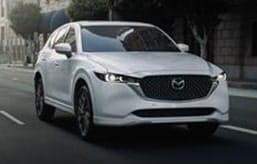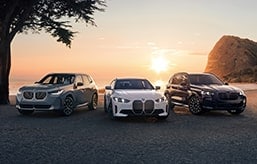- Hands-free driving finally comes to Mercedes-Benz, albeit only at lower speeds for now
- Mercedes' Drive Pilot is a Level 3 system, which means it can monitor and respond to changing conditions, but the driver must be ready to intervene
- You can even play Tetris while behind the wheel
- The timeline seems ambitious, but we're hopeful
Mercedes Plans to Bring Level 3 Automated Driving to the U.S.
True luxury is being driven
The new 2022 Mercedes-Benz EQS all-electric sedan is already a technological powerhouse, but plans are underway to push the boundaries even further. Later this year, the Drive Pilot automated driving system will begin testing on German roads and should go on sale shortly thereafter.
As a Level 3 system, Drive Pilot can respond independently to changes in road conditions — for example, it may be able to identify and maneuver around slow-moving traffic without driver intervention. However, the driver must still pay attention and be prepared to take over.
The company's rather optimistic plan is to introduce this hands-free driving system to the U.S. within two years.
What is Drive Pilot?
The Drive Pilot system adds a lidar sensor (think radar, but with lasers), upgraded cameras, GPS receivers and a host of other sensors to the existing suite of safety and driver assistant equipment to allow the EQS sedan to operate without the need for driver input. At Mercedes' new test facility in Immendingen, Germany, we were given a sneak peek at how it works.
For now, Drive Pilot operation is limited to a maximum speed of 60 kph (about 37 mph) with the hope of increasing that speed as more data is gathered. It allows the driver to release control of the steering wheel and pedals, but the driver must remain present and alert when conditions require him or her to take over. Sensors in the instrument panel track the driver's eyes to ensure the person's not asleep or otherwise distracted, though the driver's still permitted to look at the gauges or infotainment screen. Our driver even demonstrated the system while playing Tetris on the main touchscreen.
How is this different from Autopilot (FSD) or Super Cruise?
The Drive Pilot system's forward-looking lidar sensor will be able to identify vehicles and objects at greater distances than Tesla's camera-reliant system. If Drive Pilot senses the driver is no longer paying attention, it will trigger alerts to re-engage the driver or come to a stop, assuming the driver is incapacitated. Unlike Tesla's system, Drive Pilot will be limited to specific approved roads and at limited maximum speeds.
Cadillac's Super Cruise system is designed more for open highway cruising, while Drive Pilot is intended for more congested roads at lower speeds. The Drive Pilot system also uses an additional rear-facing camera and microphones to detect approaching emergency vehicles and will take appropriate action to make way. If safe operation is not possible due to changing conditions, heavy storms or detours, the system will alert the driver to take over.
Edmunds says
We've seen a system like this before on the Audi A8, only to be disappointed when it was canceled. Like Audi did with its system, we're pleased that Mercedes is taking a measured and cautious approach to ensure a safer rollout. We were impressed by Mercedes' demonstration but must note that it was under optimal conditions on a closed test course. We're cautiously optimistic that Drive Pilot will actually be allowed on U.S. roads in the coming years. Keep checking Edmunds' Mercedes EQS page for the latest developments.




 by
by